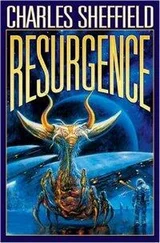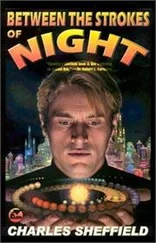I examined once more the known facts of the murders, and found thin gruel. I had the dates, the circumstances and places of death, the physical descriptions, and the names: Myra Skelton, Tanya Bishop, Doris Wu, Cissy Muller, April Jarrow, Brenda Cleve, Lucille DeNorville, Denise Braidley, Julia Vansittart, Elke Edson, Georgina Yang, and Kate Ulrey. What did they have in common?
They were young, they were female, and they were dead.
More informative, perhaps: What did they not have in common? They were of widely variable wealth and social class, from the dirt-poor welders’ daughters Brenda Cleve and Cissy Muller to the rich Myra Skelton and the even richer and royally connected Lucille DeNorville. They were not, as Seth had suggested, all beautiful, at least to my tastes. But who could say how the murderer had seen them? Before I knew that I would have to learn to see through his eyes.
The most significant fact was the wide range in the victims’ ages. April Jarrow had been eight, Doris Wu close to fifteen and a half. Although Seth had remarked that April was big for her age, he’d missed the point. I had studied the photographs and medical reports, and April and Doris lay on opposite sides of the great divide of puberty. This, in turn, seemed to place the murderer’s mind beyond reach of my own, since I would never have thought to approach a prepubescent girl.
Would I?
I have an excellent memory for facts. But how to summon to mind bygone emotional states, sensations past? That must also come from the study of cold, hard facts. Alexander Pope puts it as well as anyone: “ Remembrance and reflection, how allied. What thin partitions sense from thought divide.”
As afternoon wore on into long summer evening I put all records to one side, abandoned myself to recollection, and sought the depths of my own past.
The initiating event was clear in my mind. I was in my first year of postdoctoral study, bubbling with the ferment of ideas on the causes of apoptosis that led, five years later and via a circuitous route that I could never have imagined in advance, to a full understanding of cell death and thence to telomod therapy.
The research facility where I worked occupied a full block in the center of Atlanta. And here, for the unseen reader who is presumed to hover at the shoulder of every diarist, I must note that I am talking of a time close to forty years ago. The blooming of postapocalyptic Atlanta lay far in the future, while Atlanta’s first golden age was far vanished in the past. When first created, the Institute for Probatory Therapies sat on choice real estate; by the time I moved there it was totally surrounded by the dark metallic heart of the city. The Scantlings had taken over, and that sect’s insistence on uniformity of dress, diet, appearance, possessions, beliefs, and behavior had created the peculiar form of urban paralysis so characteristic of the second decade of this century.
I do not remember being much aware of this at the time. In fact, I feel sure that I was oblivious to details of my surroundings that did not relate directly to my work. The lab still possessed first-rate equipment. My own living quarters, a mile and a half away, consisted of two rooms in a four-story walk-up with a shared bathroom and inadequate hot water, but it satisfied my needs. Had I been asked, I would surely have said that I was perfectly happy.
How much of human happiness stems from an ignorance of what we are missing? I had tried sex with women in four brief affairs since the age of twenty, and found it fairly enjoyable but inferior in excitement to the intoxicating pleasures of research. I felt no urge toward sex with members of my own gender. Thus I had no partner or companion, and with no one else to set the pattern of my days it was my habit to rise late and work until I felt ready to stop. Usually that was after midnight, and often far beyond.
Sometimes, as on this day, dawn was touching the horizon as I left the institute and headed home. The Scantlings’ rigidity had one beneficial effect: The hours between eleven at night and six in the morning were the decreed Scantling time for sleeping, and the streets during that interval were deserted except for the machine security patrols.
It was a half-hour walk, a fine opportunity for the solitary thoughts that summarize today’s work and make plans for tomorrow. I expected to see and hear no one and nothing, except the occasional blinking and electric hum of a mobile monitor camera. With the rising sun in my eyes I did not notice the girl sitting on the stone steps of one of the buildings six blocks from mine, until she moved as I passed.
Objects came rattling down to the sidewalk and rolled under my feet. I, startled out of my reverie, trod on one of them and almost fell. I was still recovering my balance when a dark figure hurried past me and swooped on the rolling sphere.
“Got it,” said a girl’s husky voice. “Did you see where the other one went? Don’t want to lose it.”
In the morning light I saw a gleam of dull red retreating down the slight incline. I took four quick steps forward and picked it up just before it vanished into the open grille of a storm drain.
I looked at what I was holding. It was a glass marble, its swirls of white shot through with blood-red streaks. Before I could do anything else the girl was next to me and had grabbed it from my hand.
“Thanks,” she said. “I wouldn’t have minded losing a glaury or a spumy, but this is an alley-taw blood-orange and I got nothing else like it.”
She spoke with the flat vowels and swallowed consonants of the streets. Her words were gibberish, though I realized that she must be referring to the glass marbles and some children’s game. She went on talking about the little spheres, holding them out to me for inspection. I replied, but I was hardly listening. She was slim and short, no more than an inch or two above five feet. I saw a tangle of black ringlets above a pale, smooth forehead, dark, wide eyes below, a mobile mouth, a clear complexion, and the slender, budding figure of a girl on the brink of adolescence. Her clothes were ugly, too big and too adult for her.
“What are you doing outside at this time of night?” I asked. “You ought to be home in bed.”
My words were, I swear it, spoken in all innocence, and with nothing but the girl’s safety and welfare in mind.
” Tisn’t night,” she said. The deep, husky voice belied her age, but she couldn’t have been more than fourteen. “It’s light now.”
“You know what I mean. Where do you live?”
“Right here.” She raised one arm to point to the building behind her. The overlarge sleeve of her black blouse hung down like a bat’s wing. “Third floor.”
I had entered the building briefly eight months earlier when searching for a place to live. It was, like the tenement where my apartment was located, one of the few structures of central Atlanta not controlled and occupied by Scantlings. Even though it was closer to the institute, I had rejected the place because it seemed populated entirely by transients and smalltime criminals.
“What are you doing out here so early?” I asked.
“That’s my business, not yours.” She stared up at me. “What are you doing out?”
“I’m on my way from work. At the institute.” I pointed west, away from the rising sun.
She nodded, but her mind must have been still on my question to her, because she said, “I come outside because she brought somebody home with her.”
“She?”
I knew the answer, even before she said, “My mother. She brought him last night, about eleven.”
“You had to leave?”
” ’Course not". She frowned at me, as though I had asked a nonsense question. “I live there, don’t I? I could have stayed, even though he was an all-nighter.” She cocked one dark eyebrow at me. “There’d be nothing new, you know. I’ve seen it all before.”
Читать дальше












